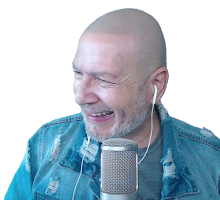I had the great fortune to attend recently the Smithsonian Folklife Festival in Washington DC. One of the most important events of its type in the world, which, for 45 years, has brought cultures and traditions of the world to Americans.
The Smithsonian Folklife Festival is an annual event held between June and July that features day and night entertainment, music and dance, crafts and cooking demonstrations, storytelling and discussions on cultural issues. In the agenda for this year 2011 were: Colombia, Peace Corps and Rhythm and Blues music.
"Colombia" The Nature of Culture”
The exhibit involved three years of work and an investment of three million dollars, assumed by the Colombian government, private industry and the Smithsonian.
Since June 28, 120 people came from Colombia, mostly artists from different ethnic groups: from the Caribbean, the Pacific, the Amazon Forest, the Andean high plains, the coffee zone and the eastern plains, to recreate and show the richness of their culture in the U.S. capital.
Musicians, dancers, craftsmen, singers, fishermen, herdsmen, farmers, transporters, cooks and storytellers from all regions of the Andean country, were discovered along a rigorous process of investigation.
The exhibition hall at the National Mall was surrounded by bamboo-made structures, called Hojamantas, which are covered with canvas to recreate the habitat of the Amazon Indians and a structure of 42 feet high that mimics the way the three major cities of the country, have formed, all designed by architects Simon Hossi and Ivonne Valencia.
But also a long list of VIP’s from the U.S. and Colombia were present, including members of Congress, officials of the Obama administration, the Colombian Ambassador, the First Lady and the Ministers of Culture and Environment and Housing of Colombia.
Other celebrities such as folk group ChocQuibTown and Fonseca appeared. Interestingly they were not in charge of entertaining the opening night, but more to pay homage to the festival participants.
"You are the real Colombia," Fonseca said, referring to the participants who were selected for the festival.
Two days after starting this year’s program, attendance at the festival had already received all annual visitors that usually come during the 10 days it lasts.
About a million people from all over the world have been amazed at the diversity of cultural and natural wealth of the country, there on the National Mall, the same place where they have delivered historic speeches like the one from Martin Luther King in 1963, and where U.S. citizens watch the Presidential Inaugurations.
But the most impressive to me was to see the interest and fascination of so many Americans, not Latinos, for the seminars provided there, with simultaneous translation – just listening to what people had to say about their way of living, their joys, their sorrows, and their values. It's amazing how the forums and lectures were filled with ordinary citizens who wanted to know more from what they already knew in this rather industrialized and over developed world, where expressions like the ones from indigenous people may be primitive or insignificant in terms of functionality.
But on the contrary, there were people wanting to learn more about crafts, culinary, textiles, and yes! Coffee: The presence of Juan Valdez and his mule Conchita, who were a media frenzy.
Children at play, perhaps imagining that they were in the jungle while playing drums and guaduas, (an important tree used to build houses, utensils, and instruments, so important to native communities.)
I was also shocked to see Colombians weep when they saw to see carts full of goodies, and products that are hard to find in the US.
All in all, I think this expo was a chance to know the true Colombia. With its friendly, enthusiastic, hard working people, a rich cultural diversity and beautiful landscapes, enlivened with incredible music, by real artists, who made us dance to the cumbia, the salsa, the vallenato, the joropo amongst other rhythms, so cherished, so loved.
For a special live broadcast of the festival you can visit the website of the Ministry of Culture of Colombia
http://www.mincultura.gov.co/
You can also see photos of the festival here:
https://profiles.google.com/104099608257130428097/photos
Or learn about the event here:
http://www.festival.si.edu/
http://www.festival.si.edu/2011/colombia-program-introduction/
